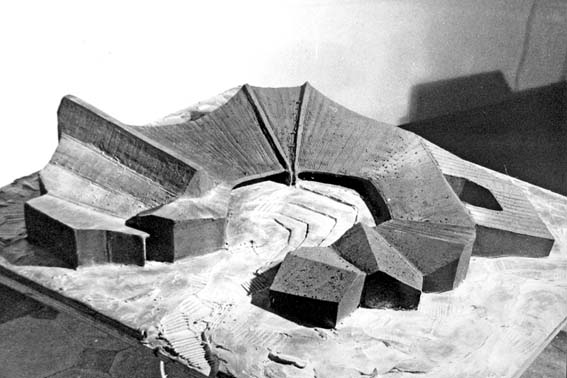Temporary worship places for permanent communities
DOI:
https://doi.org/10.17979/aarc.2013.3.0.5102Keywords:
Parish center, competition, communities, prefabrication, emergencyAbstract
When a worship place is a temporary one? What kind of construction characteristics make the difference between a temporary parish church and a permanent one? What does it mean to build a temporary worship place?
Building a place of worship comes not only from urban needs but mainly from pastoral needs and from the will of a community of having a place where meet together. This paper tells about the creation of a small prefabricated wooden church of about 450 square meters, in an area devoted to the building of the definitive parish center, outcome of a diocesan contest.
---
¿Cuando un lugar de culto es temporal? ¿Qué tipo de características de construcción marcan la diferencia entre una iglesia parroquial provisional y otro definitivo? ¿Qué significa para construir un lugar de culto temporal?
La construcción de un lugar de culto no sólo proviene de las necesidades urbanas, pero sobre todo de las necesidades pastorales y de la voluntad de una comunidad de tener un lugar donde se reúnen. Este artículo habla de la creación de una pequeña iglesia de madera prefabricada de unos 450 metros cuadrados, con un área dedicada a la construcción del centro parroquial definitiva, resultado de un concurso.
Downloads
Metrics
References
«The new church in Monterosa street». 1978. La Voce del Popolo (VdP), 12 de noviembre: 7.
Benedetti, Sandro. 2000. L’architettura delle chiese contemporanee. Il caso italiano. Milano: Jaca Book.
Debuyst, Frederic. 2003. Chiese. Arte, architettura, liturgia dal 1920 al 2000. Cinisello Balsamo: Silvana.
Forconi, Donatella. 2005. Il sacro e l’architettura. Materiali per il progetto della chiesa contemporanea. Roma: Kappa.
Gresleri, Glauco. 1967. «Lo spazio architettonico per l’assemblea liturgica: Ascoli Piceno 1966», Chiesa e Quartiere 42: 42-57;
Gresleri, Glauco. 1968. «Cattolica e Ravenna 67», Chiesa e Quartiere 45: 40-54.
Lercaro, Giacomo. 1957. «Posizione attuale del architetto di fronte al tema del sacro», Chiesa e Quartiere 2: 28-29.
Longhi, Andrea y Carlo Tosco. 2010. Architettura, Chiesa e società in Italia (1948-1978). Roma: Studium.
Pellegrino, Michele. 1967. «Arte, cultura e liturgia», Chiesa e Quartiere 42: 6.
Varaldo, Giuseppe. 2001. «Domus Ecclesiae: un concorso torinese (1996)». En Comunità, chiese, culture, editado por Roberto Gabetti y Giuseppe Varaldo, 63-66. Torino: Celid.
Vigorelli, Valerio. 1968. «Un concorso di architettura sacra», Arte Cristiana 555: 205-206.
Zito, Carla. 2013. Casa tra le case. Architettura di chiese a Torino durante l’episcopato del cardinal Michele Pellegrino (1965-77). Cantalupa: Effatà.
















